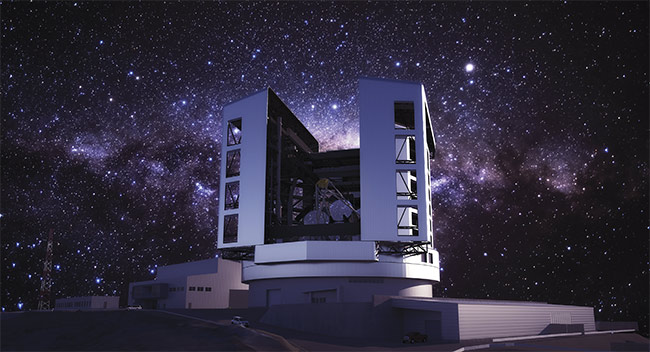The process of bringing next-generation giant telescopes online is a long and winding road prone to delays. Here’s how current projects are faring in the face of COVID-19 and other obstacles.
VALERIE C. COFFEY, SCIENCE WRITER
 The 2020 U.S. Decadal Survey on Astronomy and Astrophysics, a type of survey in which astronomers set priorities to guide federal budgets during the next 10 years, is in the process of listing its most important projects. Asteroid detection and Mars exploration are high on the list, as is continued support of a new cadre of extremely large telescopes already under construction around the world, with effective mirror apertures measuring 20, 30, or 40 m in diameter. Astronomers hope these giant ground-based light buckets will provide capabilities exceeding anything else humans have ever built, and will witness new scientific paradigms such as life on other planets, the birth of new stars, and the formation of galaxies.
The 2020 U.S. Decadal Survey on Astronomy and Astrophysics, a type of survey in which astronomers set priorities to guide federal budgets during the next 10 years, is in the process of listing its most important projects. Asteroid detection and Mars exploration are high on the list, as is continued support of a new cadre of extremely large telescopes already under construction around the world, with effective mirror apertures measuring 20, 30, or 40 m in diameter. Astronomers hope these giant ground-based light buckets will provide capabilities exceeding anything else humans have ever built, and will witness new scientific paradigms such as life on other planets, the birth of new stars, and the formation of galaxies.
Member Exclusive: To read the complete article, please Login or Register